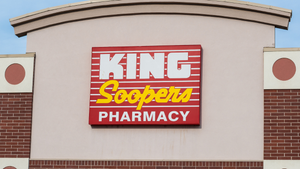CANADIAN RETAILERS EXPECT '97 SALES GROWTHCANADIAN RETAILERS EXPECT '97 SALES GROWTH
MONTREAL -- Canadian operators said they are optimistic that final 1997 results will show sales gains following the nation's first drop in total sales in over a decade in 1996, according to the Canadian Council of Grocery Distributors here.The council indicated that total industry volume fell 1.7% in 1996 to $53.1 billion (Canadian) due to the growth of food sales through nontraditional outlets such
December 29, 1997
ELLIOT ZWIEBACH
MONTREAL -- Canadian operators said they are optimistic that final 1997 results will show sales gains following the nation's first drop in total sales in over a decade in 1996, according to the Canadian Council of Grocery Distributors here.
The council indicated that total industry volume fell 1.7% in 1996 to $53.1 billion (Canadian) due to the growth of food sales through nontraditional outlets such as mass merchandisers and drug stores, which accounted for about 19.6% of total grocery volume in Canada, or about $10.6 billion.
Of companies surveyed by the council, 70% said they were anticipating a 4.5% growth rate in 1997.
In contrast, a survey by the Washington-based Food Marketing Institute of U.S. operators showed 76.3% predicting a 1997 growth rate of 5.3%.
Ironically, the surveys showed that U.S. operators were much more concerned about competition from mass merchandisers than their Canadian counterparts, with more than 33% in the United States rating mass merchants as a serious business threat, compared with only 10% of Canadian companies.
"Canadian supermarkets should be responding to the competitive threats from outside their own traditional retail channel," the council wrote in a survey report. "As Canadians expand their overall purchases, supermarket and grocery store share of the total retail market is declining, while mass merchandisers have been steadily increasing their share of the marketplace since 1994."
According to the surveys, 46.3% of U.S. companies said they have initiated loyalty-card programs, compared with only 30% of Canadian respondents, "[though] this may be due to the fact Canadian companies appear to be more focused on threats from within the grocery channel than without," the council noted.
In other council findings:
Same-store sales in 1996 rose 1.9% in Canada, down from an increase of 6.3% a year ago and lower than the 2.5% increase in the United States.
Average weekly sales per store were $240,126 in Canada -- compared with the U.S. weekly per-store average of $372,775. (All figures are in Canadian dollars.)
Average sales per customer transaction fell 4% in Canada to $24.40 while rising 11% in the United States to $27.17.
Average weekly sales per square foot rose 8% in Canada to $13.10, while the U.S. average fell 1.5% to $13.41.
Average sales per labor hour declined 4% in Canada to $143.70 -- 4% below the U.S. average of $149.29. A year earlier Canada's average sales per labor hour were 3% higher than in the United States.
Stores in Canada averaged 26,161 square feet, compared with 39,166 square feet in the United States. The average size in both countries was up 4% over the prior year.
Canadian stores increased the number of stockkeeping units in 1996 by 2% to 17,857, while U.S. stores increased SKUs by 5% to 36,426 items.
Inventories in Canada turned an average of 21 times per store in 1996, compared with a per-store average of 22 times in 1995, while U.S. turns increased to 17 from 16 a year earlier. The average price per item in Canada declined a penny to $1.96, while the U.S. average increased a penny to $2.29.
Remodeling activity declined in 1996, with 14.9% of Canadian stores being remodeled last year, compared with 16.5% in 1995. Only 3.6% of U.S. stores were remodeled last year, compared with 6.9% the previous year. Average capital investment increased in Canada by 30% to $573,807, while U.S. investments declined 5.3% to $1.8 million.
Store brands rose 10% in Canada over the prior year to a total of 23% of annual supermarket sales, compared with 29% in the United Kingdom, 16% in France, 14% in the United States and 11% in Germany.
About the Author
You May Also Like






